TSUKUBA FUTURE
#021 Detective of Paleontology: Enchanted with the History of Life
Associate Professor AGEMATSU Sachiko, Faculty of Life and Environmental Sciences

The items studied by paleontologists are not just dinosaurs and ammonites. Fossils range in size from small (microfossils) to large. Prof. Agematsu's specialty is microfossils called "conodonts" which are only 0.2-0.5 mm in size. Most people are unfamiliar with conodonts, but they are fossils found over a period of more than 300 million years, from the Upper Cambrian (about 500 million years ago) to the end of the Triassic (201 million years ago). They were named by a Russian paleontologist in 1856. The word "conodont" means "having conical (con-) teeth (-odont)." But the fossils are not just cylindrical, and have a wide variety of forms, including odd, jagged shapes. It is thought that the possessors of these "teeth" inhabited a broad range of the world's oceans, and the fossils are found in comparatively large quantities from strata at various locations which long ago were at the bottom of the ocean. When rocks containing fossils are dissolved with acid, only fossils and minerals comprised of phosphate and silicate resist being dissolved and remain. They have distinctive forms, and thus it is possible to correlate the eras of strata where the same fossils are found.
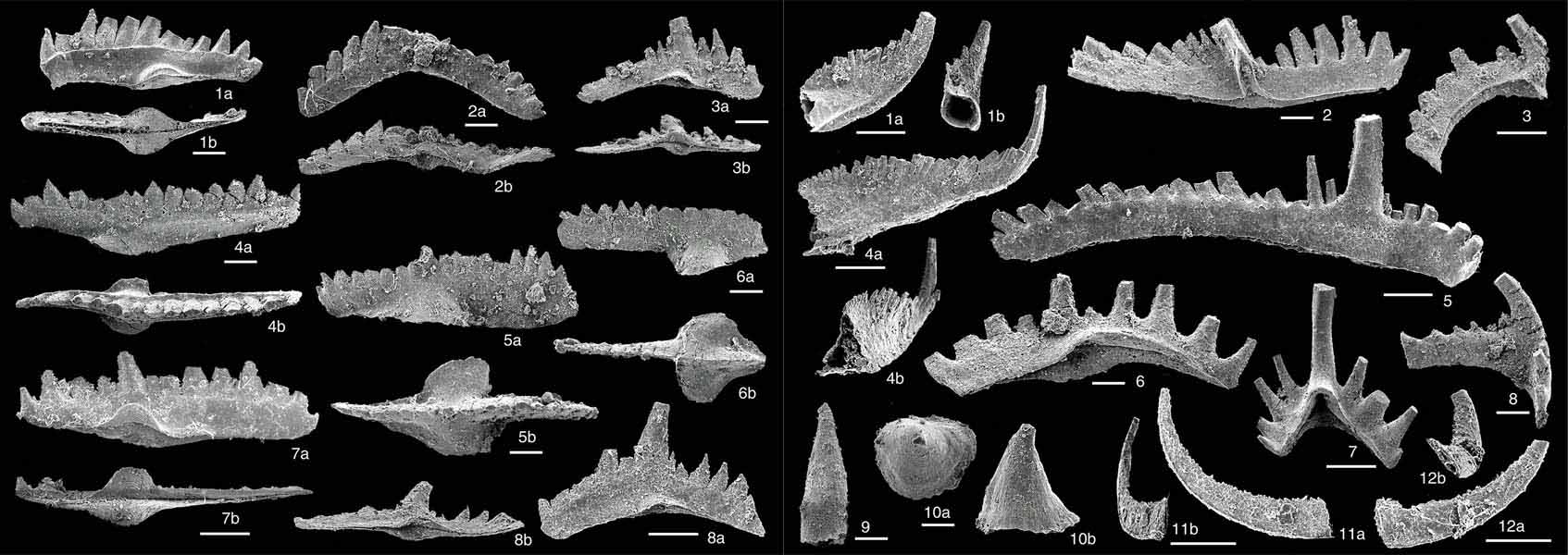
Prof. Agematsu is one of only a handful of conodont researchers in Japan. Why did she originally want to become a paleontologist specializing in conodonts? She says it was a confluence of coincidences. First, was the fact that the school seal of her elementary school featured a fossil. In the school seal of Tomikusa Elementary School (Anan-cho, Shimoina-gun, Nagano Pref.), shark's teeth are positioned at the center of the emblem. (In the current school seal, the serrations of the teeth have been omitted.) This area is famous as a fossil producing region. Fossils such as shark's teeth and desmostylus (a herbivorous mammal from the Miocene) have been excavated, and the area has an exhibition facility called the Anan Fossil Museum. After growing up in this area where fossils are a familiar presence, Prof. Agematsu experienced a life-changing encounter in the school library. In a series of educational comic books, she found one in which a fossil researcher was patterned after a master detective. She suddenly realized: "Paleontologists are detectives!" That was the moment she decided to be a fossil researcher.
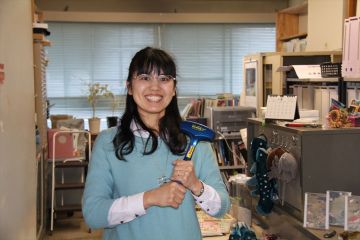
There has been a tradition of paleontology research at the University of Tsukuba since its days as the Tokyo University of Education, and in recent years it has earned an established reputation for research on determining the age of geological strata (stratigraphy) by using microfossils. Among the research topics proposed by her advisor, Prof. Katsuo Sashida, she was fascinated by research on conodonts. The attractions were their puzzling nature, and the small number of researchers in Japan. Once a famous paleontologist Stephen Jay Gould described conodont as a "riddle wrapped in a mystery inside an enigma" borrowed from Winston Churchill. The biggest puzzle was the fact that only "teeth" have been found. Even assuming that conodonts were the "teeth" of a marine animal, no one had a clue what sort of animal they had been. Part of the riddle was solved in 1983, 127 years after conodonts were named. A long, thin animal with conodont "teeth" was discovered in rock found in Scotland containing Carboniferous fossils (dating to about 340 million years ago). It was a fish with an eel-like body, a row of the aforementioned "teeth" deep in its throat, and a tail fluke. However, that didn't close the case. Clearly the creature was related to the fish, but even though the group survived for 300 million years, only one complete fossil has been found. Judging from that fossil, the creature had no scales or armor, and its body appears to have been soft. That would make it hard to leave fossils. Nevertheless many mysteries remain regarding the arrangement and function of teeth.
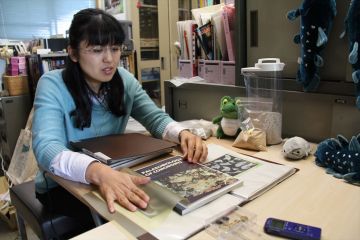
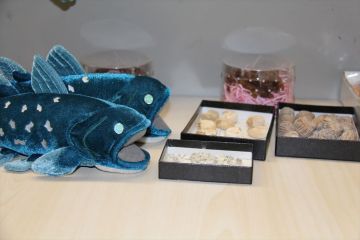
Each "tooth" of a conodont is called an element. A set (natural collection) found from a single rock is interpreted and classified as probably being a single individual. Prof. Agematsu is creating enlarged models of sets of elements with paper clay, and attempting to recreate their three-dimensional arrangement. Her current dream is to "see through" a single rock containing elements by some special equipment. If that could be done, it might be possible to see a structure in which the living form of the creature was fossilized as is.
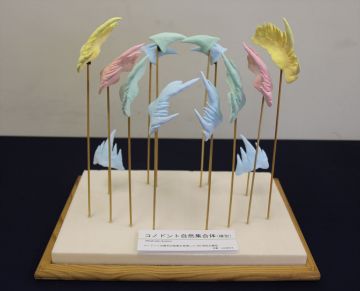
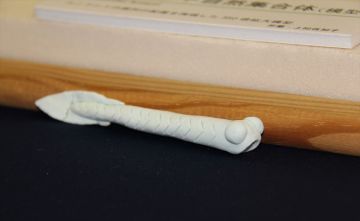
Life on earth has previously experienced five mass extinctions. These occurred at the end of the Ordovician (about 444 million years ago), in the late Devonian (about 372 million years ago), and at the end of the Permian (about 252 million years ago), Triassic (about 201 million years ago), and Cretaceous (66 million years ago). Conodonts went extinct in the mass extinction at the end of the Triassic, but prior to that they survived three mass extinctions. Why did a creature which did not remain in the fossil record survive these disasters? If the creature was that tough, why did it go extinct in the end? Prof. Agematsu is working on these riddles. Conodonts can be found even in Japan. She is also conducting surveys in overseas fossil producing regions such as Thailand. In the laboratory, she conducts research on microfossils such as radiolaria and ichnites (fossilized footprints) of dinosaurs. She is currently looking for a team of detectives who like solving riddles.
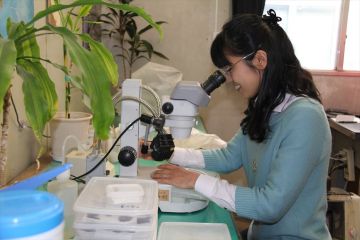
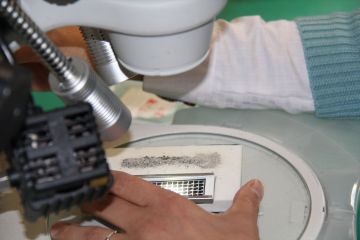
Article by Science Communicator at the Office of Public Relations
PREVIOUS
#020 My Fair Language


